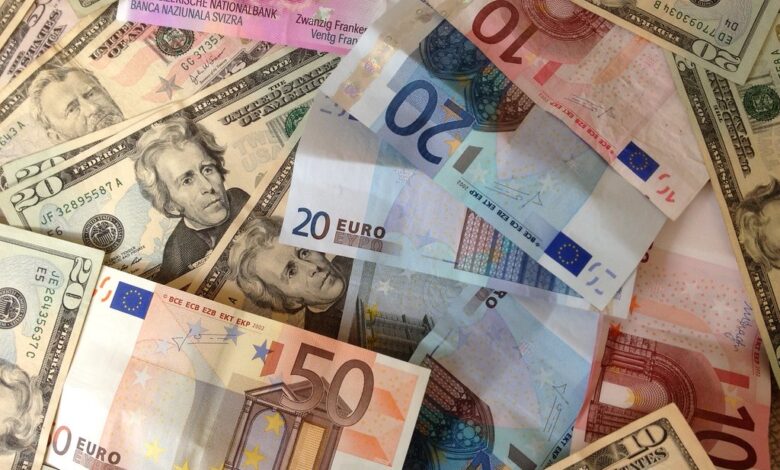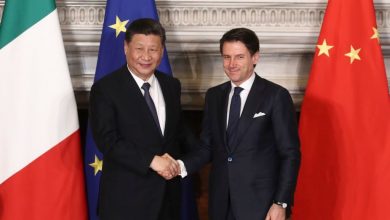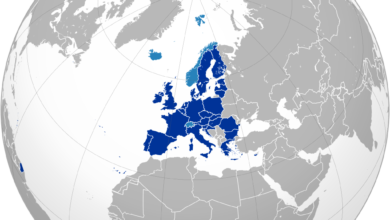The Dollar Is Stronger Than Ever – But Can The Euro Challenge Its Rule?

The international status of the Dollar is a staple of the postwar order. As a currency of choice for most of the planet’s financial transactions, the Dollar has become a foundational piece of the architecture of the modern world, with momentous consequences for the United States and the international community. Indeed, the demand for dollars is so great as to have deeply shaped policy even outside the United States.
The entire Cold War financial success of the United Kingdom was predicated on its ability to provide Eurodollars to the financial markets – that is, dollars sold in London and thus, critically, outside the regulatory scope of the Federal Reserve. With the coronavirus pandemic forcing central banks into panicked holding actions, moreover, the status of the Dollar as the Global Reserve Currency seems more entrenched than ever. But is that true? Could the Euro challenge this position, and should it?
The Dollar: Lifeblood of International Transactions
To begin with, let us define what a Global Reserve Currency (GRC) actually is. To put it into simple terms, it is the currency which Central Banks and other financial institutions maintain to prepare for financial actions, ranging from investments to variations in domestic exchange rates. Once a currency becomes used as a reserve all over the world, it naturally becomes a GRC.
Hoarding a single GRC has been traditionally appealing: a reserve currency removes the need to exchange currency every time when doing trade. This naturally reduces the exchange rate risk associated with currency exchanges. Since everyone holds the same GRC, they can do trade with the same currency, which helps facilitate investment and other transactions.
All of this global hoarding has a myriad of net effects. On one hand, it generates a massive import of capital to the issuer country; it increases the demand for the currency and hence increases its value; it allows the issuer to hold ”cheap” debt and ”live beyond its means” to paraphrase former French Finance Minister Valéry Giscard d’Estaing’s comment about the United States. Indeed, the endless appetite for dollars has allowed the United States to run a trade and financial deficit of immense scale, since American debt issues always invariably find numerous willing buyers. It has also allowed countries like China and Russia to avoid inflationary pressure on their expanding economies by siphoning money away from the money supply, through the mass purchase of American bonds.
On the surface, this might sound like an amazing deal: everyone else benefits from a stable currency, trade is facilitated and risks are lowered. The issuing country, meanwhile, gains capital and has access to ”cheap” and extensive financing. When one looks closer, however, one notices that not everyone benefits from this windfall. Capital inflow disproportionately benefits financial institutions, causing an increase in wealth disparity and inequality in the issuing country.
Especially in the current economic context, very few people are holding their breaths to see if the wealth will trickle-down. The gain in demand for the currency leads to the subsequent increased value of the currency. This bloated value damages exports and thus hurts the industry. The financial institutions grow wealthier at the expense of the country’s industrial base. While Asian industry keeps taking up more and more market share from the US, the difference between the industrial sector and the financial sector becomes unbearable, particularly as it also eats at the income and job prospects of the working class.
At present over 60% of bank reserves outside the United States are denominated in US-dollars. The picture is similar for global debt, with dollar denominations holding a share of approximately 40%. The thirst for dollars gives no sign of slowing down. In fact, after the 2008 financial crash, institutions around the world began hoarding dollars, a move exacerbated when the Federal Reserve acted as the lender of last resort to save the Eurozone from collapse in 2012. The same hoarding is taking place today, with the world economy reeling from the shock of COVID-19. One could say that the demand for US-dollars has never been higher than now. However, this hasn’t stopped some commentators from sounding the alarm bells.
The Currencies That Would be Kings
Recently Goldman Sachs strategists have warned that the US Federal Reserve’s reaction to the coronavirus crisis may end up destroying the Dollar’s reign as the pre-eminent GRC. The Fed has increased its balance sheet by around $2.8Tn, an absolutely astronomical amount, and has been busy printing money. A GRC requires for itself a certain level of stability, so that it is easily predictable and so that it carries little risk, but financial strategists are warning that the current monetary policy threatens to debase the currency over the coming years. In such a case there is a threat that the savings held by financial institutions globally will be worth much less than what they are now.
This warning has triggered an immediate market reaction. The demand for Gold and Bitcoin (and other alternative currencies) have soared. “Gold is the currency of last resort, particularly in an environment like the current one where governments are debasing their fiat currencies and pushing real interest rates to all-time lows,” commented Goldman strategists. It is important to note that such warnings have been issued before, and historically betting for the Dollar to fail has been a losing game.
For a long time, the Euro was seen as the next GRC, with Euro reserves seeing global growth and prominence at the expense of the Dollar. This progress came to a sudden halt around 2008, in the turbulent onset of the financial crisis. In the decade since, the Eurozone has shown itself to be a relatively unstable economy, which is one of the key qualifications institutions look for in a GRC issuer. This effectively ruled out the Euro’s candidacy for the time being. For the Euro to truly become a GRC it would require great strides from the Eurozone in terms of ensuring that the bloc is stable, including stricter financial controls and some form of internal debt mutualisation system, both of which are unpopular ideas within the bloc, albeit amongst different groups for each.
China, with their Yuan Renminbi (RMB), is the other natural contender to the status quo. For China, becoming the issuer of a GRC would be a chance to garner more financial independence as their trade would no longer be tied to US dollar issuance – although an alternative policy would need devising to contain inflation. In essence, getting onshore currency from the US is excessively easy. The idea of limiting dollar exports has been raised by some, but it has been noted that this could have catastrophic effects on US inflation rates. China has a myriad of other reasons to become a GRC. It would lower borrowing costs, increase Chinese prestige around the world, support Xi Jinping’s reform efforts, spread exposures of the RMB around the world and finally allow China to become a price setter.
All of this would support the CCP’s goal of creating a multi-polar world where the USA would no longer be a sole hegemon. This drive towards a greater prominence of the RMB has been built on increased Chinese market share of global trade and the addition of the Yuan renminbi into the IMF Special Drawing Rights basket – the basket of currencies which count towards the official reserves of nations. The SDR used to be tied to gold but is now tied to a basket of five major currencies.
The Yuan, however, still faces considerable difficulties. The currency is not fully convertible, the onshore version is hard to come by and no trade-safe asset is available. While both the RMB and Euro have become the reserve currencies of their respective regions – much of the non-EU European countries holding the Euro as their main reserve currency, and Chinese neighbours holding the Yuan or the Japanese Yen – there are significant obstacles for them to reach the status of GRC, even in a multi-polar system.
For the Euro, there are high risks in terms of prestige and economic policy. For example, if China were to peg the Yuan to the Euro, this would have severe implication on the value of the currency and on Europe’s ability to command their own monetary policy. At the same time, the ensuing over-valuation of the Euro could be catastrophic for the European industry, as the currency is already overvalued for much of the union – with the notable exception of Germany. This would also increase wealth disparities and most likely lead to social disruptions.
With all of these considerations in mind, elevating the Euro to GRC status would still lead to higher financial independence for Europe. Whether or not the Eurozone would be ready for the necessary reforms to push through a plan for a GRC – or whether it would even be smart to do so – is still questionable, although the promise of prestige may often be popular among federalist circles.





